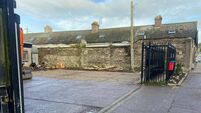Resident exotic herons here on the rise
Herons have been my constant companions, lumbering into the air as I drive up to the boat and then floating back to earth a hundred metres away to resume the motionless vigil of the dedicated fisherman.
They’re extraordinary birds. I always think there’s something exotic, or even prehistoric, about them — the great, grey pterodactyls of our waterways. They’re certainly large — a mature male can stand a metre tall, have a wingspan of nearly two metres and weigh up to two kilos.













